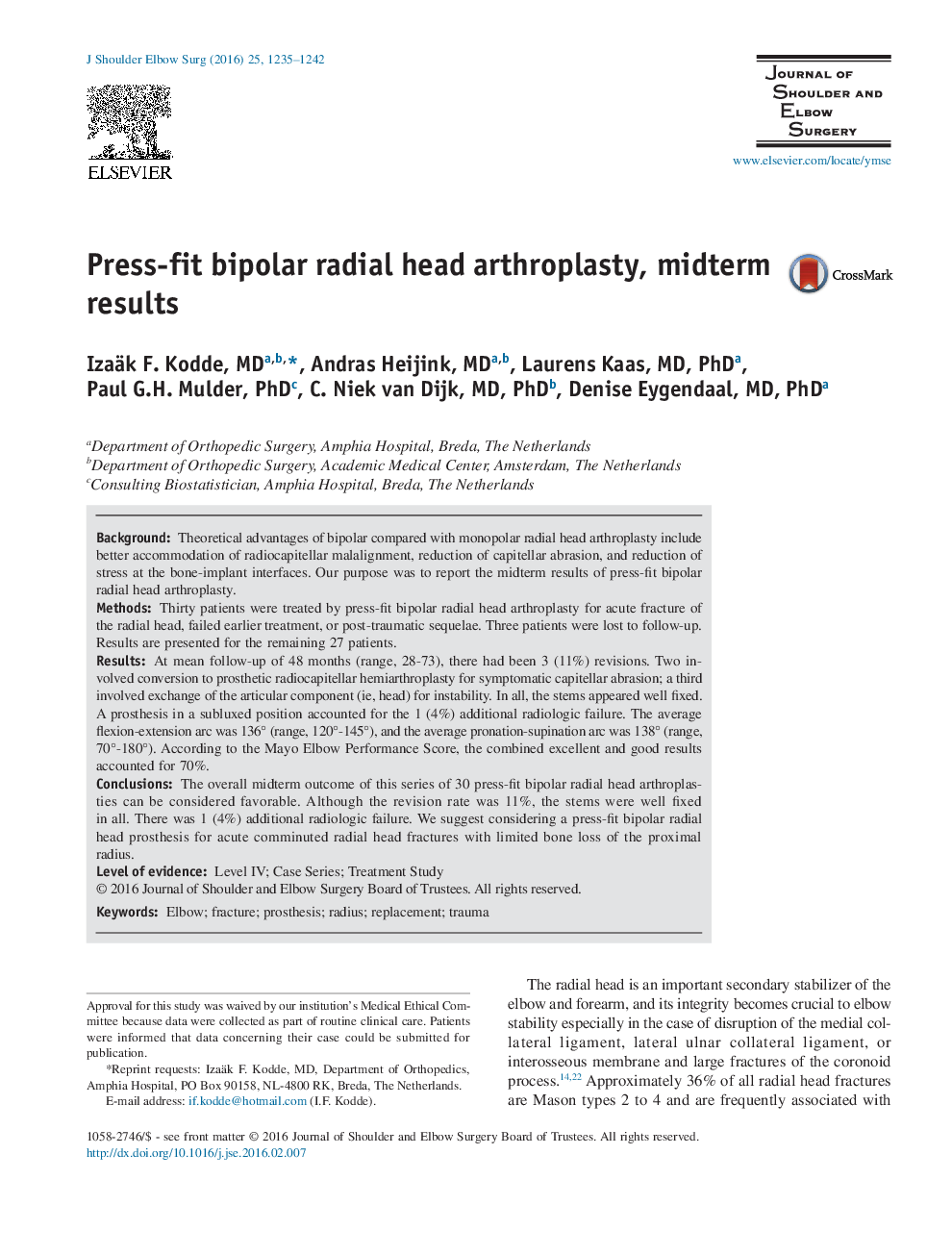| Article ID | Journal | Published Year | Pages | File Type |
|---|---|---|---|---|
| 4072797 | Journal of Shoulder and Elbow Surgery | 2016 | 8 Pages |
BackgroundTheoretical advantages of bipolar compared with monopolar radial head arthroplasty include better accommodation of radiocapitellar malalignment, reduction of capitellar abrasion, and reduction of stress at the bone-implant interfaces. Our purpose was to report the midterm results of press-fit bipolar radial head arthroplasty.MethodsThirty patients were treated by press-fit bipolar radial head arthroplasty for acute fracture of the radial head, failed earlier treatment, or post-traumatic sequelae. Three patients were lost to follow-up. Results are presented for the remaining 27 patients.ResultsAt mean follow-up of 48 months (range, 28-73), there had been 3 (11%) revisions. Two involved conversion to prosthetic radiocapitellar hemiarthroplasty for symptomatic capitellar abrasion; a third involved exchange of the articular component (ie, head) for instability. In all, the stems appeared well fixed. A prosthesis in a subluxed position accounted for the 1 (4%) additional radiologic failure. The average flexion-extension arc was 136° (range, 120°-145°), and the average pronation-supination arc was 138° (range, 70°-180°). According to the Mayo Elbow Performance Score, the combined excellent and good results accounted for 70%.ConclusionsThe overall midterm outcome of this series of 30 press-fit bipolar radial head arthroplasties can be considered favorable. Although the revision rate was 11%, the stems were well fixed in all. There was 1 (4%) additional radiologic failure. We suggest considering a press-fit bipolar radial head prosthesis for acute comminuted radial head fractures with limited bone loss of the proximal radius.
